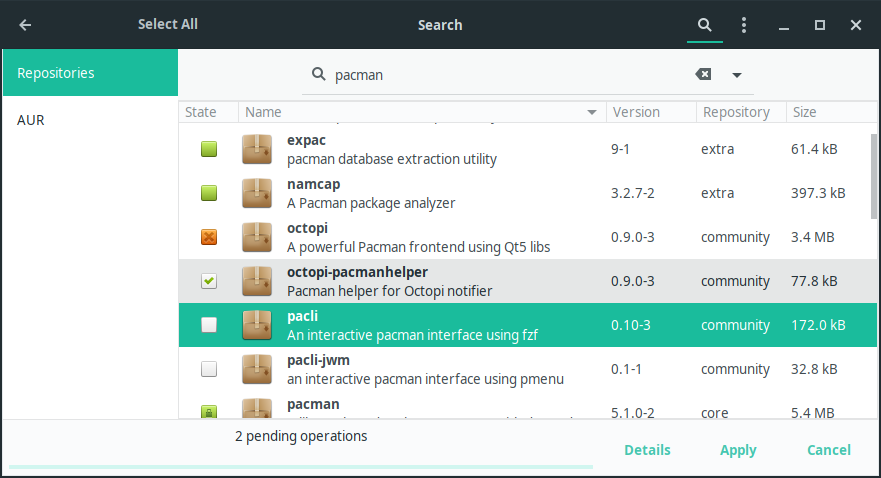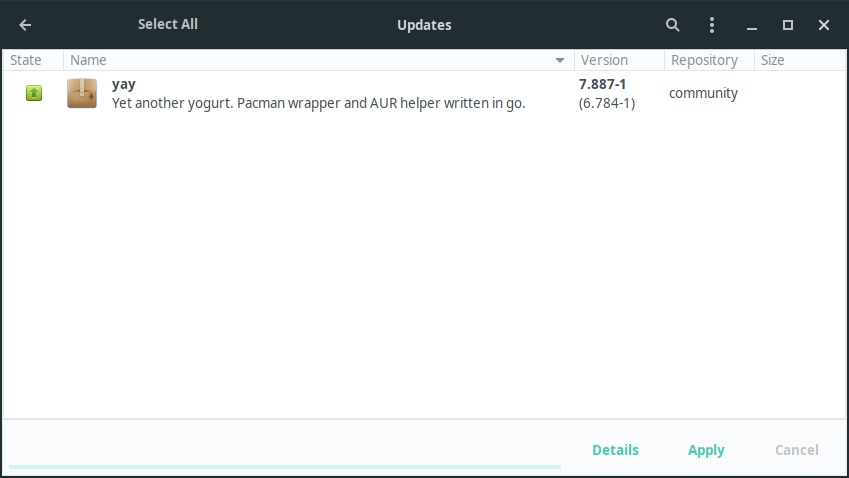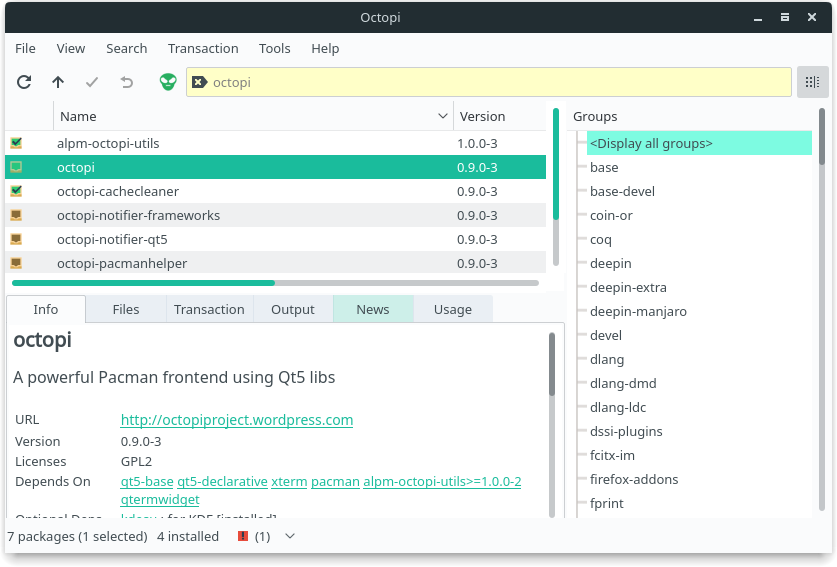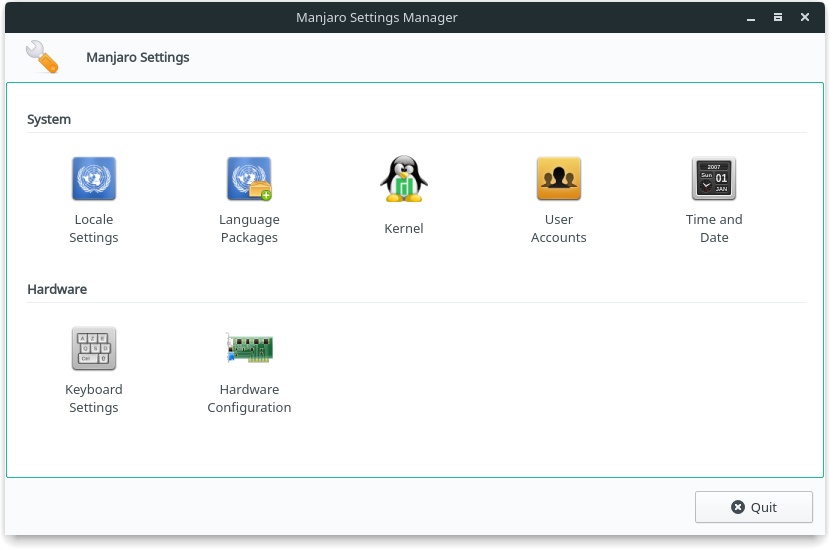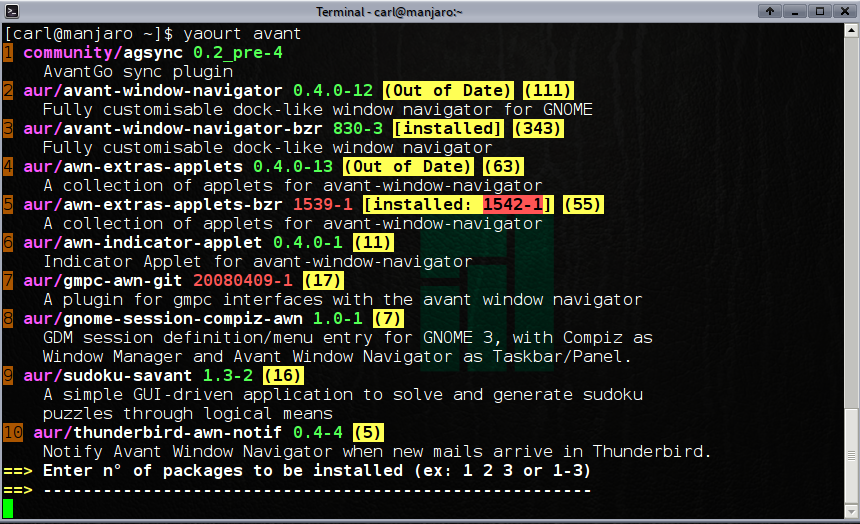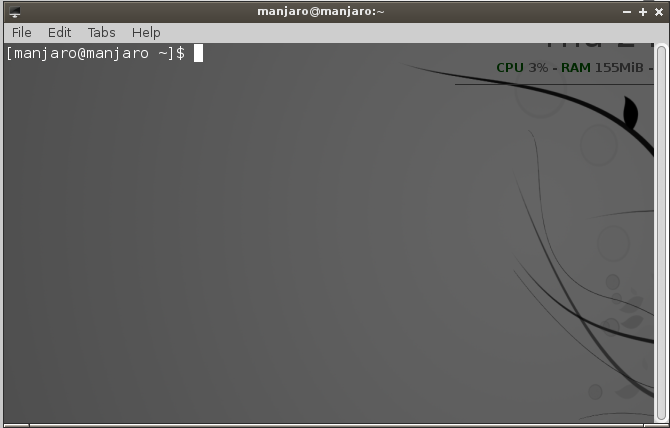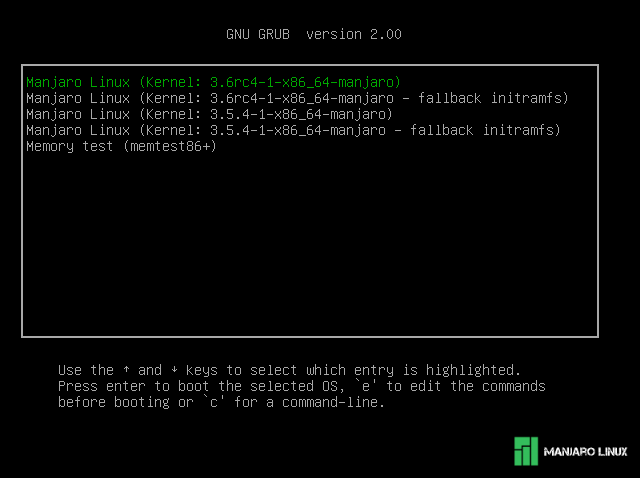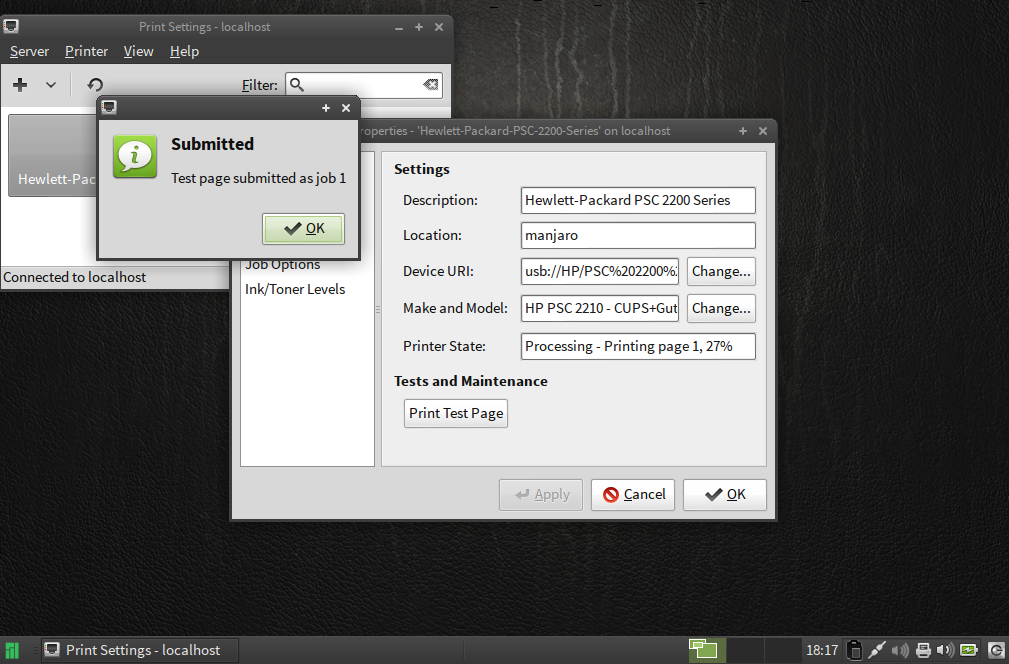Yeni Başlayanlar İçin Manjaro'yu Kullanma
Bu kılavuz, Manjaro işletim sistemini en iyi şekilde kullanmak için gerekli bazı önemli bilgi noktalarına kısa bir genel bakış sağlar.
Pamac, in the menus add Add/Remove software, is Manjaro's graphical software manager.
Yazılım Ekle/Kaldır, sisteminize yazılım paketleri (uygulamalar) eklemek ve kaldırmak için çok basit ama güçlü bir araçtır. Başlattıktan sonra, yeni ve güncellenmiş yazılımlar için resmi Manjaro Depolarını otomatik olarak kontrol edecektir. Tamamlandığında, yüklemek veya kaldırmak istediğiniz şeyin adını veya kısa açıklamasını girin ve 'Bul düğmesine tıklayın
Aramanızla eşleşen tüm yüklü ve kullanılabilir yazılımlar daha sonra sağda görüntülenecektir. Hemen aşağıda bu konuda daha fazla bilgi görmek için herhangi bir sonucun adını tıklayın.
Paket adının yanındaki onay kutusu yüklü olup olmadığını gösterir.
- 'Bir paket yüklemek için, yükleme için işaretlemek üzere bitişikteki onay kutusunu tıklatın.
- To remove an installed package, click the adjacent checkbox to mark it for removal.
Once package boxes have been marked and/or cleared, you may undertake more searches before clicking the Apply (check mark) button to conform your choice(s). It really is that simple!
- To update packages, click the Updates tab, look over your selections, then click Apply
The Pamac Updater will automatically check and notify you of any available system updates.
A full guide to using pamac is available here.
Another available options for graphical software updates and management is Octopi. Like pamac-manager, Octopi can install software from either the repos or AUR.
- To install available updates click the menu icon at the bottom of the application window (in this illustration, next to the red star), and then select Install.
- To install a package after searching, right-click the listed package (ins, and then select Install. Once done, then click the green tick icon at the top to confirm.
- To remove a package after searching right-click the listed package (installed packages will have a green icon with a tick next to them), and then select Remove. Once done, then click the green tick icon at the top to confirm.
A full guide on using Octopi is available here.
On occasion, particularly when installing new software applications, several other software packages will also be automatically installed as well. These are known as dependencies, as they are necessary for whatever is being installed to work properly. In other words, the software package being downloaded is dependent upon them.
Your package manager will list the dependencies required for software packages in the information pane. For example, as illustrated, if the VLC Media Player were to be installed, then several other software packages --such as to allow it to play different media formats-- would also be automatically be downloaded if not already installed on the system. Without them, the Media Player would not be able to play certain media formats, or perhaps not be able to play anything at all!
The Manjaro Settings Manager offers you GUI settings, which are either enabled by Manjaro (i.e. installation of multiple kernels and easy installation of non-proprietary and proprietary graphics drivers) or are missing from at least some of the popular Desktop Environments and Window Managers.
Manjaro Ayarlar Yöneticisi geliştirme aşamasındadır ve gelecekte solda gösterilenden daha fazla ayar sunabilir.
Although Manjaro is compatible to Arch --being based on Arch itself-- it is not possible to access the official repositories of the Arch System to download software. Manjaro instead uses its own official repositories in order to ensure that any software packages provided (e.g., system updates and applications) have been fully tested and are completely stable before release.
However, it is still possible to access additional software packages from the Arch User Repository (AUR), which is managed by the Arch community of users themselves. Although this repository is unofficial, software packages first placed here are known to make their way into Arch's official repositories if they become popular enough. A guide on how to Access the AUR has been provided.
In simple terms, a terminal (or console) is an interface that allows for text commands to be entered and displayed. As it is an exceptionally powerful and versatile tool to use, Arch and other Arch-based systems are notable for relying far more heavily on their use than other (user-friendly) distributions such as Ubuntu or Mint, which have placed a greater focus on the use of Graphical User Interfaces (GUI).
Although GUIs to undertake many common tasks have been provided with Manjaro, particularly to assist new users just as with other user-friendly distributions, it may on occasion be necessary to use the terminal to get something done. Most of the guides contained in the wiki rely on using the terminal, particularly where solving problems and tweaking the system is concerned. For those users who wish to learn more about how Manjaro works, and for those who wish to take full advantage of its versatility, it is highly recommended to learn how to use the terminal. Don't worry: it's not that hard or scary, and this wiki can be used to guide you every step of the way.
Linux çekirdeği, Linux işletim sisteminin çekirdeğidir. Bilgisayarınızın donanımı ile üzerinde çalışan uygulamalar arasında bir arayüz görevi görür. Manjaro yalnızca birden çok çekirdeğin kullanımını desteklemekle kalmaz, aynı zamanda en yeni çekirdeklere kolay erişim sağlar. Sisteminizde kurulu olan tüm mevcut çekirdekler, yüklenen her çekirdek sürümünün yedek kopyaları dahil olmak üzere, önyükleme sırasında sunulacaktır. Alt menüler etkinse, bir setin ikinci öğesinde Enter tuşuna basmanız gerekecektir.
Having most supported kernels available means you have the ability choose from having bleeding-edge kernel updates or sticking with a stable LTS kernel. No matter what kernel you choose, you will still get access to the latest applications.
A guide on how to manage kernels has been provided.
It is easy to add printers in Manjaro. Full instructions on installing the necessary software are provided in the Printing guide.
A more complete user guide can be found in your Applications menu or at location /usr/share/doc/manjaro/Beginner_User_Guide.pdf
An online version can be found here.
